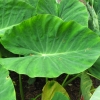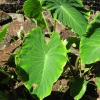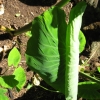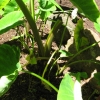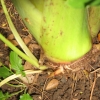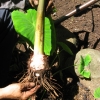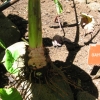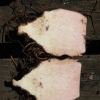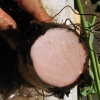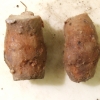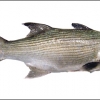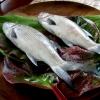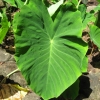Use As Food
Good poi and table taro. Moi is a great taro to ku‘i because it has a high ‘ūlika (gumminess) factor. The corm is easier to ku‘i when it is warm.
Distribution
Presently this variety is very popular throughout the Hawai‘i; especially on O‘ahu, Maui, Moloka‘i, and in Puna, Hawai‘i; grown mainly under māla (upland) culture, but also does well under lo‘i (wetland) culture. This is a commercially important variety.
General Characteristics
Medium in height, well spreading, maturing within 9 to 12 months, producing from 5 to 10 ‘ohā; characterized by its light green Hā (Petiole) with pinkish kōhina (base).
Ha (Petiole)
60 to 85 cm. long, slender, drooping, light green, indistinctly whitish-green at the lihi (stem edge), a pink ring at the kōhina (base) with lighter pink for 3 to 5 cm. above the base.
Lau or Lu'au(Leaf Blade)
40 to 55 cm. long, 30 to 45 cm. wide, 30 to 45 cm. from tip to base of sinus (māwae), narrowly egg-shaped (ovate), thin in texture, medium green ; piko whitish; veins conspicuous, light green; round leaf section (lobes) acute with shallow, wide lihi māwae (sinus).
'I'o kalo (Corm)
Flesh white with light pinkish tinge, especially near the top (apex), the fibers yellow; skin pale pink.
Pua (Flower)
Remarks
86. Moi ‘Ula‘ula is similar in appearance to 81. Moi. The differences Moi ‘Ula‘ula's Hā (petiole) has a light-reddish tinge on bright green. 81. Moi's Hā (petiole) is solid green.

